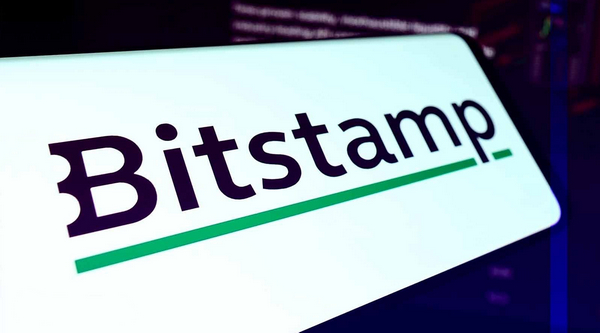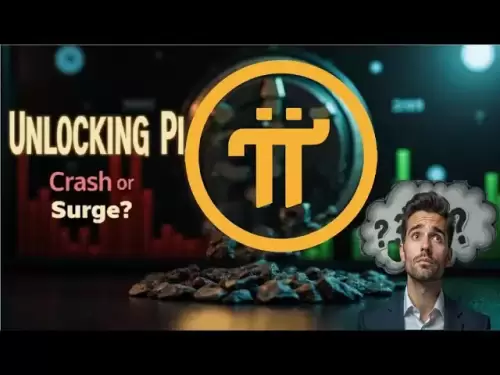-
 Bitcoin
Bitcoin $107,814.2183
1.08% -
 Ethereum
Ethereum $2,463.5660
1.32% -
 Tether USDt
Tether USDt $1.0006
0.02% -
 XRP
XRP $2.1904
0.02% -
 BNB
BNB $658.4950
1.31% -
 Solana
Solana $150.0570
1.53% -
 USDC
USDC $1.0002
0.01% -
 TRON
TRON $0.2823
1.22% -
 Dogecoin
Dogecoin $0.1634
2.68% -
 Cardano
Cardano $0.5657
3.30% -
 Hyperliquid
Hyperliquid $38.6646
-0.70% -
 Bitcoin Cash
Bitcoin Cash $501.8244
-2.85% -
 Sui
Sui $2.7979
3.64% -
 Chainlink
Chainlink $13.1942
1.21% -
 UNUS SED LEO
UNUS SED LEO $8.9470
0.44% -
 Avalanche
Avalanche $17.7386
2.23% -
 Stellar
Stellar $0.2324
-0.87% -
 Toncoin
Toncoin $2.8435
1.38% -
 Shiba Inu
Shiba Inu $0.0...01148
2.34% -
 Litecoin
Litecoin $85.6186
0.37% -
 Hedera
Hedera $0.1490
1.37% -
 Monero
Monero $322.8553
1.63% -
 Polkadot
Polkadot $3.3791
1.39% -
 Dai
Dai $1.0002
0.02% -
 Bitget Token
Bitget Token $4.5749
0.75% -
 Ethena USDe
Ethena USDe $1.0002
0.00% -
 Uniswap
Uniswap $7.1451
2.66% -
 Aave
Aave $268.4133
1.40% -
 Pepe
Pepe $0.0...09614
1.94% -
 Pi
Pi $0.4952
0.74%
Bitstamp contract tutorial
Understanding the nuances of Bitstamp's contract trading platform is crucial for effective execution and risk management, ensuring traders navigate the volatile cryptocurrency market with confidence.
Nov 19, 2024 at 11:12 pm

Bitstamp Contract Trading: A Comprehensive Tutorial
Introduction
Bitstamp, a renowned cryptocurrency exchange established in 2011, has recently introduced contract trading to its platform, offering traders a new avenue to participate in the volatile crypto market. Contract trading, often referred to as perpetual futures, allows traders to speculate on the price movements of an underlying asset without actually owning it.
This comprehensive tutorial delves into the nuances of Bitstamp's contract trading platform, guiding traders through every step of the journey, from understanding contract specifications to executing and managing trades effectively.
Step 1: Understanding Contract Specifications
Before venturing into contract trading, it is crucial to grasp the fundamental aspects that govern these instruments. Bitstamp offers perpetual contracts, which means they have no fixed expiration date and can be held indefinitely. Each contract is denominated in a specific underlying asset, such as Bitcoin (BTC) or Ethereum (ETH), and has a predetermined notional value, determining the total value of the underlying asset represented by a single contract.
Additionally, contracts are traded with leverage, magnifying both potential gains and losses. The leverage ratio, such as 10x or 20x, indicates the amount of leverage applied to a position. It is imperative to use leverage judiciously as it can exacerbate losses.
Step 2: Funding and Margin Management
Contract trading requires traders to maintain a sufficient balance in their Bitstamp account to cover potential losses and margin calls. Margin serves as collateral for leveraged positions and ensures that traders have adequate funds to withstand adverse market movements. Before placing trades, traders must ensure they have sufficient margin to cover the potential risks associated with their positions.
Step 3: Understanding Order Types
Bitstamp offers various order types to cater to different trading strategies and risk preferences. Understanding these order types is crucial for effective trade execution:
- Limit Order: Allows traders to specify the desired entry or exit price for a contract. The order will only execute if the market price reaches the specified level.
- Market Order: Executes a contract trade at the current market price, ensuring swift execution but potentially at a less favorable price.
- Stop Order: Triggers a trade when the market price reaches a specified level, enabling traders to protect their positions or enter the market at a specific price.
- Trailing Stop Order: Adjusts the stop loss price based on the current market price, allowing traders to lock in profits or limit losses dynamically.
Step 4: Placing and Monitoring Trades
Once traders have a firm grasp of order types, they can proceed to place trades. The Bitstamp trading interface is designed to be user-friendly, allowing traders to quickly enter orders and monitor open positions.
To place a trade, traders specify the contract they want to trade, select the order type and enter the desired price or quantity. Once the order is executed, it will appear in the "Open Orders" section of the trading interface. Traders can monitor the status of their orders and make adjustments as needed.
Step 5: Managing Risk and Position Adjustment
Risk management is paramount in contract trading, and traders must employ various strategies to safeguard their capital. Using appropriate leverage and setting stop-loss orders are crucial. Additionally, position adjustment is essential to manage risk and optimize returns.
Traders can adjust their positions by entering opposite trades, such as closing a long position by opening a short position of equal size. This technique allows traders to reduce their exposure without exiting the market entirely.
Step 6: Understanding Fees and Commissions
Bitstamp charges fees and commissions for contract trading, which vary based on the volume traded and the type of order placed. Understanding these fees is crucial for traders to accurately calculate their potential profitability.
Fees include a maker fee, charged when an order adds liquidity to the market by creating a limit order that is not immediately executed, and a taker fee, charged when an order takes liquidity from the market by executing against an existing order.
Conclusion
Bitstamp's contract trading platform provides traders with a versatile tool to speculate on the price movements of cryptocurrencies with leverage. By understanding the contract specifications, managing margin effectively, and utilizing appropriate order types, traders can navigate the dynamic crypto market with confidence.
Remember to approach contract trading with a comprehensive understanding of the risks involved and always trade within your risk tolerance.
Disclaimer:info@kdj.com
The information provided is not trading advice. kdj.com does not assume any responsibility for any investments made based on the information provided in this article. Cryptocurrencies are highly volatile and it is highly recommended that you invest with caution after thorough research!
If you believe that the content used on this website infringes your copyright, please contact us immediately (info@kdj.com) and we will delete it promptly.
- Robert Kiyosaki Still Bullish on Bitcoin: Why $107K is 'Cheap'
- 2025-07-02 20:30:12
- Coinbase, Liquifi, and Crypto M&A: What's the Deal?
- 2025-07-02 21:10:12
- XRP, SEC, and ETF Buzz: What's the Deal?
- 2025-07-02 22:10:11
- Nexo Drives into Crypto-Golf: A Digital Wealth Play on the DP World Tour
- 2025-07-02 21:10:12
- Crypto Down in July 2025? Decoding the Market's Mixed Signals
- 2025-07-02 21:30:12
- Arbitrum, DeFi, and TradFi: A New York Minute on the Future of Finance
- 2025-07-02 22:10:11
Related knowledge

How to identify the contract value range in combination with the market profile?
Jul 02,2025 at 10:56pm
Understanding the Market ProfileTo effectively identify the contract value range in combination with the market profile, it's essential to first understand what each concept entails. The market profile is a framework that helps traders visualize how price and time interact across a given period, typically a trading day or session. It provides insights i...

How to use the price slope to filter the false breakthrough signal of the contract?
Jun 20,2025 at 06:56pm
Understanding the Concept of Price Slope in Contract TradingIn contract trading, especially within cryptocurrency derivatives markets, price slope refers to the rate at which the price changes over a specific time period. It helps traders assess the strength and sustainability of a trend. A steep slope may indicate strong momentum, while a shallow slope...

How to determine the expected volatility of the contract through the volatility cone?
Jun 19,2025 at 12:28pm
Understanding the Basics of Volatility in Cryptocurrency ContractsIn the realm of cryptocurrency trading, volatility is a key metric that traders use to assess potential risk and reward. When dealing with futures contracts, understanding how volatile an asset might become over time is crucial for position sizing, risk management, and strategy developmen...

How to formulate a contract intraday trading plan in combination with the pivot point system?
Jun 21,2025 at 03:42pm
Understanding the Basics of Pivot Points in Cryptocurrency TradingPivot points are technical analysis tools used by traders to identify potential support and resistance levels. These levels are calculated using the previous day's high, low, and closing prices. In the context of cryptocurrency trading, where markets operate 24/7, pivot points help trader...

How to adjust the contract position ratio through the price fluctuation entropy?
Jun 22,2025 at 11:42am
Understanding Price Fluctuation Entropy in Cryptocurrency ContractsIn the world of cryptocurrency futures trading, price fluctuation entropy is a relatively new concept used to measure market volatility and uncertainty. It derives from information theory, where entropy refers to the degree of randomness or unpredictability in a system. In crypto contrac...

How to use the volume swing indicator to predict the contract volume-price divergence?
Jun 18,2025 at 11:42pm
Understanding the Volume Swing IndicatorThe volume swing indicator is a technical analysis tool used primarily in cryptocurrency trading to evaluate changes in volume over time. Unlike price-based indicators, this metric focuses solely on trading volume, which can provide early signals about potential market reversals or continuations. The key idea behi...

How to identify the contract value range in combination with the market profile?
Jul 02,2025 at 10:56pm
Understanding the Market ProfileTo effectively identify the contract value range in combination with the market profile, it's essential to first understand what each concept entails. The market profile is a framework that helps traders visualize how price and time interact across a given period, typically a trading day or session. It provides insights i...

How to use the price slope to filter the false breakthrough signal of the contract?
Jun 20,2025 at 06:56pm
Understanding the Concept of Price Slope in Contract TradingIn contract trading, especially within cryptocurrency derivatives markets, price slope refers to the rate at which the price changes over a specific time period. It helps traders assess the strength and sustainability of a trend. A steep slope may indicate strong momentum, while a shallow slope...

How to determine the expected volatility of the contract through the volatility cone?
Jun 19,2025 at 12:28pm
Understanding the Basics of Volatility in Cryptocurrency ContractsIn the realm of cryptocurrency trading, volatility is a key metric that traders use to assess potential risk and reward. When dealing with futures contracts, understanding how volatile an asset might become over time is crucial for position sizing, risk management, and strategy developmen...

How to formulate a contract intraday trading plan in combination with the pivot point system?
Jun 21,2025 at 03:42pm
Understanding the Basics of Pivot Points in Cryptocurrency TradingPivot points are technical analysis tools used by traders to identify potential support and resistance levels. These levels are calculated using the previous day's high, low, and closing prices. In the context of cryptocurrency trading, where markets operate 24/7, pivot points help trader...

How to adjust the contract position ratio through the price fluctuation entropy?
Jun 22,2025 at 11:42am
Understanding Price Fluctuation Entropy in Cryptocurrency ContractsIn the world of cryptocurrency futures trading, price fluctuation entropy is a relatively new concept used to measure market volatility and uncertainty. It derives from information theory, where entropy refers to the degree of randomness or unpredictability in a system. In crypto contrac...

How to use the volume swing indicator to predict the contract volume-price divergence?
Jun 18,2025 at 11:42pm
Understanding the Volume Swing IndicatorThe volume swing indicator is a technical analysis tool used primarily in cryptocurrency trading to evaluate changes in volume over time. Unlike price-based indicators, this metric focuses solely on trading volume, which can provide early signals about potential market reversals or continuations. The key idea behi...
See all articles

























































































